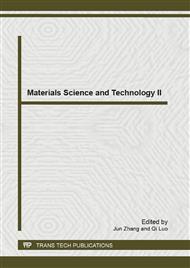p.78
p.84
p.89
p.94
p.98
p.103
p.109
p.113
p.119
As an Alternative Membrane: Functional NanoParticles/Polymer Composites Membranes for Proton Exchange Membrane Fuel Cells (PEMFC)
Abstract:
Novel proton conducting nanocomposite membranes included binary and ternary mixtures of acid modified nanotitania particles particles with polymers such as poly (vinyl alcohol) (PVA),pol (vinyl phosphonic acid), sulfonated polysulfone (SPSU) and poly (1-vinyl 1,2,4-triazole) (PVTri) . The interaction of functional nanoparticles with the host matrix were searched by FT-IR spectroscopy. The homogeneous distribution of functional nanoparticles in the membranes was confirmed by SEM micrographs. The spectroscopic measurements and water/methanol uptake studies suggested a complexation between polymers and sulphonic acid that inhibited the leaching out of acidic units. The TGA results verified that the presence of modified nanoparticles in the composite membranes the thermel stability of the membranes enhanced up to above 200 °C.
Info:
Periodical:
Pages:
98-102
Citation:
Online since:
July 2013
Authors:
Price:
Сopyright:
© 2013 Trans Tech Publications Ltd. All Rights Reserved
Share:
Citation:


